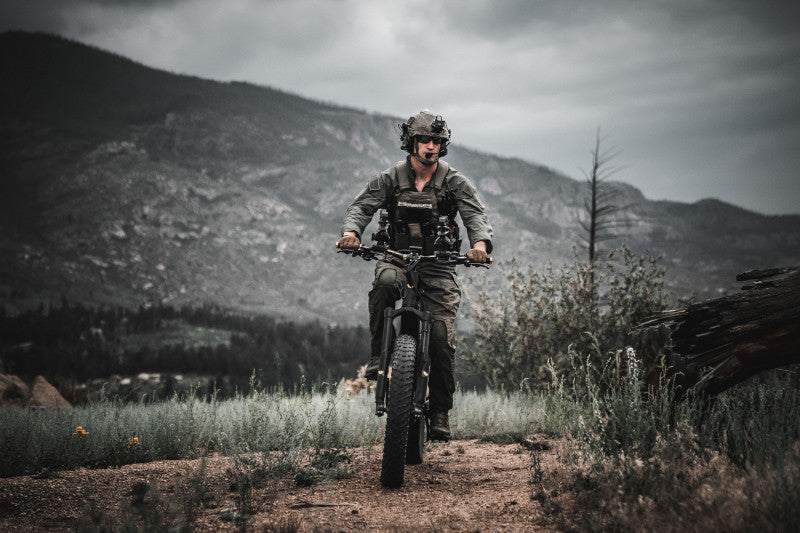So, you’ve found yourself searching for the perfect electric mountain bike. You’re scrutinizing suspension and geometry. You’re making sure you have top-of-the-line brakes and a build kit that suits your riding style. Before you opt all the way in for speed, ask yourself: what do you sacrifice when you go all in on power that’s solely centered on speed? We’re here with a host of tips to help you make sure you choose and create the fastest electric fat tire bike possible.
The Fastest EBike
When we look at any bike that doesn’t utilize pedal assist and touts a motor power of over 5KW (that’s over five times our most powerful motor), we tread further away from the realm of electric bicycles. Truly, they fall into a class of their own that exists somewhere between e-bikes and motorbikes and mopeds. And, they’re not allowed on many bike trails or in National Parks. So before you make a decision, ensure you’re fully understanding what kicking up the speed might preclude you from accessing.
The Three EBike Classifications
As the technology of electric mountain bikes becomes more sophisticated and more people around the globe buy and explore on their e-bikes, local and national authorities are creating more legislation to ensure that all user groups can coexist in smart ways that promote a positive experience for all.
Recently, there was a monumental announcement from the National Forest Service that paves the way for allowing local governing bodies to decide where and how e-bikes can be used on trails owned and managed by the U.S. Forest Service. Part of what this announcement does is further sharpen the language around the three classifications of electric bikes. Yes, this is a positive step for e-bikes, but it is also something of which you should be well aware when you’re thinking about your need for speed.
Class 1: electric bikes in this category are pedal-assist only—meaning the bike will not move without active physical engagement by the rider—and there’s no throttle with a maximum assisted speed of 20mph.
Class 2: electric bikes in this category are also pedal-assisted but also feature a throttle. The maximum speed is still 20mph.
Class 3: like Class 1 bikes, electric bikes in this category are pedal-assist only and there’s no throttle. But, unlike Class 1, the maximum assisted speed is 28mph.
Note that it’s understood that all classes limit the motor’s power to 1 horsepower. So the aforementioned fastest electric bikes on the market are outside of this classification.
5 Ways to Make Sure Yours is the Fastest Electric Bike
In order to ensure the greatest possible access for our electric bikes, you can expect that maxed out, all QuietKat e-bikes will roll at about 20mph (which—all things considered—is pretty fast when you’re hauling through the forest on the trail). But, there are a number of other ways to attempt to make sure yours is the fastest electric fat tire bike possible. Here are our quick tips:
1. Make sure you’re fully charged.
A fully charged electric mountain bike yields a higher voltage output. We broke down the full details of what to expect from a (fully charged )1000 watt electric bike on our blog.
2. Invest in a higher voltage battery.
Like we said above, a bike with a higher charge results in a higher voltage output which, in turn, ensures you’re getting the most out of your speedometer. Peruse the full lineup of QuietKat batteries and charging accessories to see if an upgrade is right for you.
3. Opt for smoother tires.
If you’re taking your mountain-going steed off the trails and into the urban concrete jungle, one way to make sure you’re achieving top speed is to swap out your knobby, grippy tires for smoother tires. Smoother tires have less rolling resistance and can even add a 1-2mph bump.
4. Tune your brakes.
Did you know that poorly tuned brakes can slow down your e-bike? The unnecessary friction from brake rub can keep you from your full speed potential. It’s easy to learn how to tune your brakes yourself. If you’d rather leave it to the experts, simply take it to your local bike shop.
5. Tuck!
Ever watched the Tour de France? Then you’ll see the riders picking up impressive speed when they crouch low into their handlebars and reduce wind resistance. Try it: it’s amazing how much speed you can feel yourself picking up when you’re rolling downhill.



 USA
USA Canada
Canada




